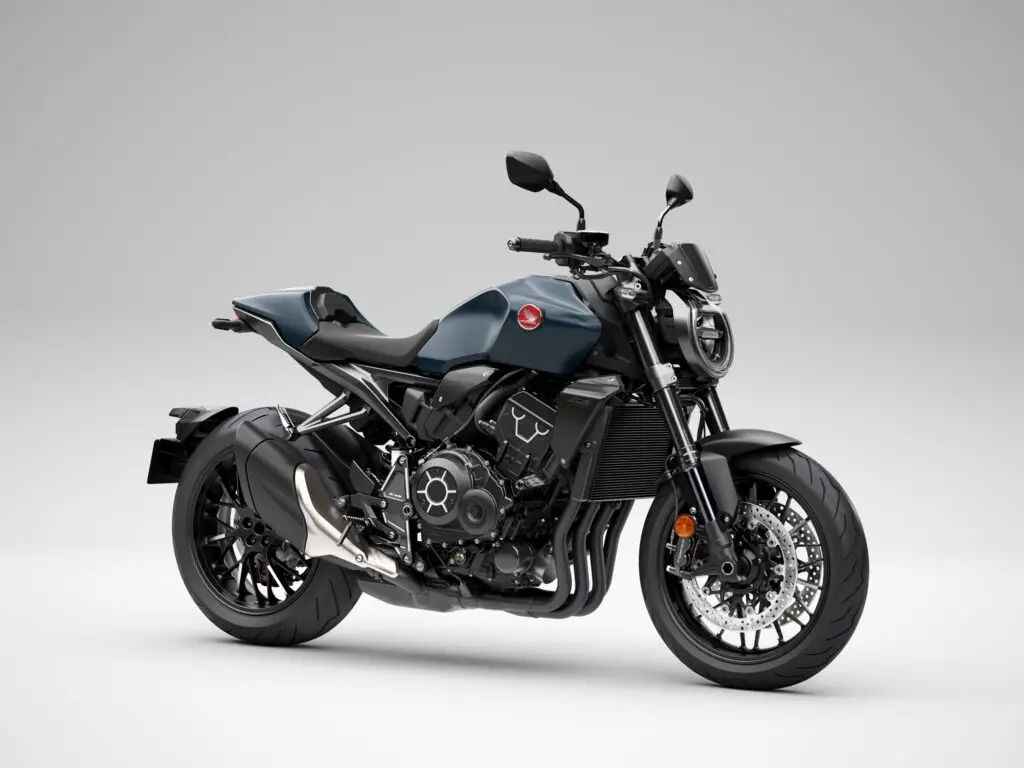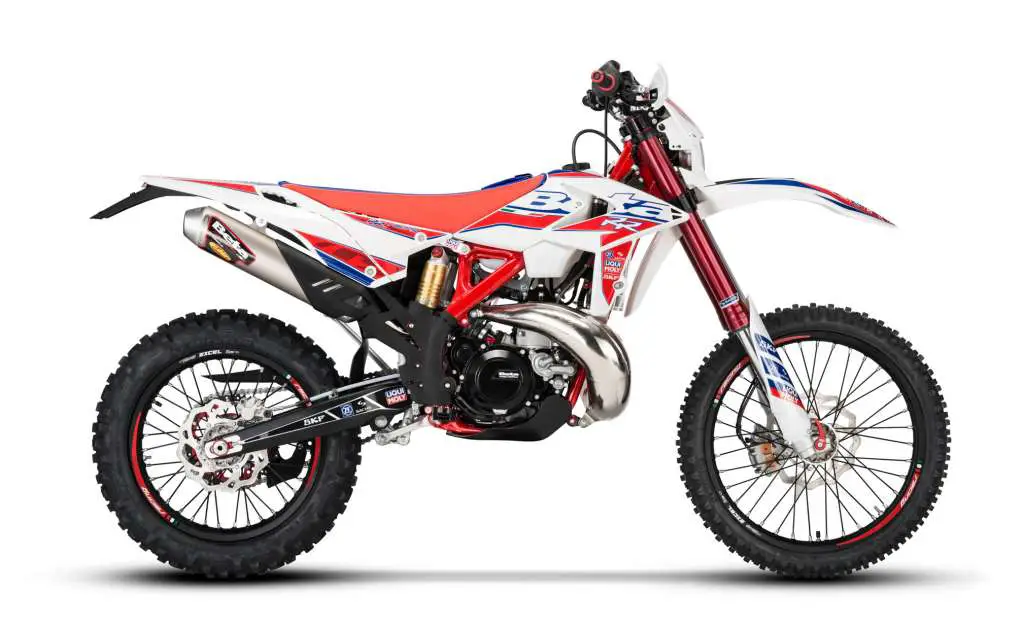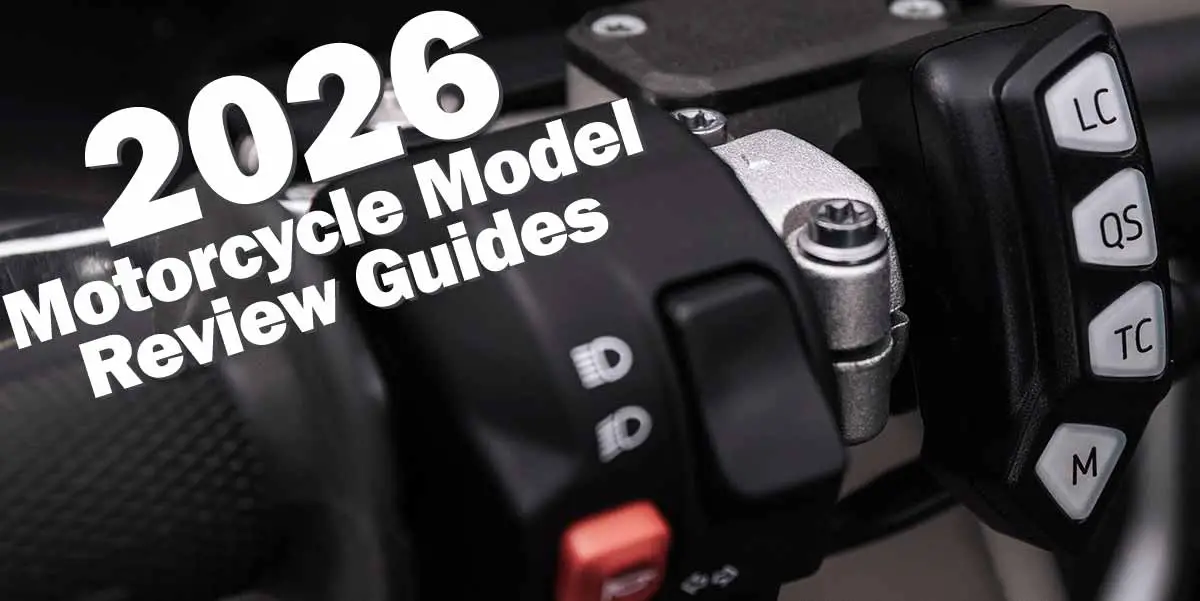
Posted on September 30, 2025 by Michael Le Pard
Section Six: The Soul of a Bike – The Engine
Where to go, where to start to optimize your riding skills and not miss anything.
Here’s how I began, maybe it will work for you too.
To listen to engine sounds, you may need to right-click and choose “Save Target As” to download the sound file, then play it locally.
This section will help you out, just relax and read on…
The Soul of a Motorcycle – The Engine

“You have a choice. You can either have the growl, grunt, and thump, or you can have maximum performance. But you cannot have both.”
- Fewer cylinders → More torque at low revs, great for trails, off-road, and MX. Distinctive sound and strong biker culture identity.
- More cylinders → Higher RPM, smoother ride, better for long-distance touring and highway use.
- Vibrations decrease as cylinder count increases, improving comfort on long rides.
Four-Stroke Motorcycle Engines
The most common motorcycle engine type. The cycle:
- Intake: Piston down, intake valve opens, fuel-air mixture enters.
- Compression: Piston up, mixture compressed, valve closes.
- Power: Spark ignites mixture, piston forced down.
- Exhaust: Piston up, exhaust valve opens, gases expelled.
Piston down… Piston up… Piston down… Piston up. Four strokes.
Single Cylinder Engines

The simplest motorcycle engine: one piston, one cylinder, one spark plug.
Description: Found in smaller bikes where torque matters more than horsepower or top speed (e.g., dual-sports, dirt bikes, MX). Also used in budget-friendly cruisers like the Suzuki Savage 650. Known as “thumpers” for their distinctive sound.
- Advantages: Light, cheap, easy to maintain, no carb synchronization needed, strong low-end torque.
- Disadvantages: Limited RPM, low horsepower, high vibration, less smoothness.
The In-Line Motorcycle Engine
In-line engines arrange all cylinders in a single row, aligned with the wheels. Variants include parallel twins, triples, fours, and sixes.
In-Line Parallel Twin Engines

Parallel twins use two cylinders side by side, either in 180° (one up, one down) or 360° (both up, both down) configurations. Once very popular, they remain common in lightweight, nimble bikes like the Kawasaki Ninja 250/500, Suzuki GS500E, and Honda CB500.
- Advantages: More torque than singles, higher RPM potential, relatively light, smoother with counterbalancers.
- Disadvantages: More vibration than triples/fours, less horsepower than larger in-lines, higher maintenance than singles.
In-Line Triple Cylinder Engines

In-line triples are a unique compromise between twins and fours. Once more common, they are now rare, with Triumph being the most notable manufacturer still producing them (e.g., Speed Triple, Rocket 3).
| 1999 Triumph Sprint ST | In-line 3 cylinder | Idle, revving, accelerate, passing Rating: 7/10 |
Listen | 0:55 | 900kb |
| 1974 Suzuki GT750 “Kettle” | In-line 3 cylinder | Hard acceleration through gears Rating: 9/10 |
Listen | 0:22 | 233kb |
| 2002 Triumph Daytona | In-line 3 cylinder | Full sequence: start, idle, rev, top speed Rating: 9/10 |
Listen | 3:17 | 2.3mb |
Advantages: Higher RPM than twins, more torque than fours, lighter and with fewer moving parts than fours, smoother than twins due to easier piston balancing.
Disadvantages: Less common today, parts can be more expensive, not as smooth as fours or as torquey as twins.
Overall, triples are a versatile middle ground with a distinctive sound and character.
In-Line Four Cylinder Engines

In-line fours are the most iconic sportbike engine configuration. Known for their smoothness, high-revving nature, and screaming exhaust notes, they dominate performance motorcycles worldwide.
| 2000 Kawasaki ZRX1200 | In-line 4 cylinder | Idle, fast revving Rating: 8/10 |
Listen | 0:17 | 136kb |
| 2002 Suzuki GSXR600 | 599cc In-line 4 cylinder | Revving, accelerate, pass Rating: 7/10 |
Listen | 0:28 | 194kb |
Advantages: Extremely smooth, very high RPM potential, excellent horsepower and top speed, iconic sound.
Disadvantages: Heavier, more complex, higher maintenance, less torque at low revs compared to twins or triples.
In-line fours are the go-to for sportbikes and high-performance machines, offering thrilling top-end power.
In-Line Four Cylinder Engines (continued)
| 1999 Suzuki 1200 Bandit | In-Line 4 cyl | On-board, hard acceleration through all gears, max RPM Rating: 9/10 |
Listen | 0:29 | 347kb |
Description: The in-line four is today’s speed king, prized for horsepower, smoothness, and top speed. Introduced in 1968 with the Honda CB750, it revolutionized performance motorcycling. Common in mid-to-large displacement bikes (500cc+), it remains the dominant sportbike engine.
- Advantages: High horsepower, smooth operation, legendary top-end performance.
- Disadvantages: Heavy, complex, less torque at low RPM, high maintenance (four carburetors or throttle bodies).
- Note: Smoothness is excellent, though not quite as refined as boxer engines.
In-Line Six Cylinder Engines

| 1979 Honda CBX | In-Line Six Cylinder | Fast rev, on-board, hard acceleration through all 5 gears Rating: 10/10 |
Listen | — | 664kb |
Description: Produced mainly in the late 70s and early 80s, the in-line six was designed to be the ultimate engine in the horsepower and cylinder wars. Found in large-capacity bikes (1000cc+), such as the Honda CBX1000 and Kawasaki Z1300, it offered unmatched smoothness and top-end power.
- Advantages: Incredible smoothness, high horsepower, prestige factor.
- Disadvantages: Too heavy, overly complex, expensive to maintain, market adoption was limited.
- Legacy: Modern successors like BMW’s K1600 series keep the spirit alive with advanced engineering.
The V-Twin Cylinder Engine
The V-Twin is one of the most iconic motorcycle engine layouts. Two cylinders are arranged in a “V” configuration, creating a distinctive sound and strong low-end torque. Popular in cruisers, sportbikes, and touring machines, the V-Twin is synonymous with motorcycle culture.
V2 (Twin) Engines

| 1997 Ducati 900SP | 904cc 90° V-Twin | Idle, accelerate away Rating: 7/10 |
Listen | 0:12 | 135kb |
| 2000 Honda Shadow ACE 750 | 52° V-Twin | Idle, revving, accelerate away Rating: 10/10 |
Listen | 0:27 | 189kb |
| 1999 Ducati 748 Biposto | 748cc 90° L-Twin | Idle and rev Rating: 7–8/10 |
Listen | 0:21 | 248kb |
| 2002 Suzuki SV650 | 645cc 90° V-Twin | Idle, revving Rating: 4/10 |
Listen | 0:14 | 645kb |
Description: V-Twins are beloved for their torque-rich delivery, visceral sound, and cultural identity. They power everything from Harley-Davidson cruisers to Ducati sportbikes.
Advantages: Strong low-end torque, iconic sound, compact design.
Disadvantages: More vibration than multi-cylinder engines, less top-end horsepower, cooling challenges in some layouts.
Despite drawbacks, the V-Twin remains one of the most enduring and celebrated engine types in motorcycling.
V-Twin Engines (continued)
| 1999 Ducati 748 Biposto | 748cc 90° L-Twin | Idle and lots of revving Rating: 8/10 |
Listen | 1:49 | 639kb |
| 1997 Ducati 916 | 916cc 90° V-Twin | Idle and accelerate Rating: 6/10 |
Listen | 0:10 | 474kb |
Description: The V-Twin was developed in the early 1900s to fit two cylinders into narrow bicycle-style frames. It remains one of the most iconic motorcycle engine types, especially in cruisers.
Advantages: Low weight, simplicity, strong torque, and a broad RPM range.
Disadvantages: Lower horsepower and top speed than multi-cylinder engines, potential vibration depending on V-angle.
Note: 90° V-Twins are inherently balanced and vibrate less than other V-angles or parallel twins. While popular in cruisers, other designs (in-line fours, boxers, V4s) often outperform them in smoothness and power.
V4 Engines

| 1985 Yamaha VMax | V-Four Cylinder | Idle, revving Rating: 4/10 |
Listen | 0:08 | 193kb |
Description: The V4 was developed in the early 1980s to overcome V-Twin limitations. Found in power cruisers, muscle bikes, and touring machines (e.g., VMax, Magna, Venture), the V4 combines smoothness, torque, and horsepower in a compact package.
Advantages: Smoother than V-Twins, more power and torque, narrower than in-line fours or sixes.
Disadvantages: More complex than twins, less common, and often more expensive to maintain.
The Boxer Engine
The “Boxer” refers to horizontally opposed cylinders that move in and out together, like a boxer’s fists. This design reduces vibration and provides excellent balance.
Boxer Two Cylinder Engines

Description: Developed as an alternative to the V-Twin, the Boxer Twin offered smoother operation and competitive power. Widely used during WWII, it became a BMW hallmark.
Advantages: Smoothness, balance, higher RPM potential than V-Twins.
Disadvantages: Wide engine layout reduces cornering clearance, exposed heads are vulnerable to damage.
Today: BMW continues to refine the Boxer Twin, using it in modern sport and touring bikes.
Boxer Four Cylinder Engines

Description: Introduced in the late 1950s, the Boxer Four improved smoothness and performance over the twin. Popular in touring bikes like the Honda Gold Wing, it offered excellent comfort but limited cornering clearance.
Advantages: Smooth, stable, ideal for long-distance touring.
Disadvantages: Lower RPM potential, wider design, more complex and costly to maintain.
Trend: Many manufacturers, including BMW, have shifted back to Boxer Twins or in-line fours for touring.
Boxer Six Cylinder Engines

| 2002 Honda Valkyrie | 1800cc Boxer Six | Idle, burnout, hard acceleration Rating: 8/10 |
Listen | 0:20 | 914kb |
Description: The Boxer Six, used in large touring bikes like the Honda Valkyrie and Gold Wing, delivers unmatched smoothness and power.
Advantages: Extremely smooth, powerful, ideal for luxury touring.
With Honda’s quest to provide the consumer with ultimate smoothness we now have the Boxer Six. It would seem history has repeated itself with the introduction of another 6 cylinder engine 20 years ago(see Honda Inline-Six) and the high level of complexity is still there in this engine. Like the Inline Six, this engine is aimed at the Touring market (and power cruisers as well), will the consumer be ready for it? So far after 4 years of production, it seems it is.
Currently the only manufacturer offering this engine is Honda. So parts are expensive as well as maintenance and up keep, it is also very heavy. But for super long distance touring, you cannot find a more smooth engine on the market. The advantages of the Boxer Six are many, high amounts of torque and horsepower, good RPM range and glass like smoothness. They are only made in VERY large sizes (1500cc) right now.
| 2002 Honda 1800cc Valkyrie | Boxer Six | Horn Rating: 3/10 |
Listen | 0:02 | 113kb |
Description: Honda’s Boxer Six was designed to deliver ultimate smoothness for long-distance touring. Like the in-line six before it, this engine is highly complex, heavy, and expensive to maintain. Currently, Honda is the only manufacturer producing Boxer Six engines, found in large touring bikes like the Gold Wing and Valkyrie.
Advantages: Immense torque, horsepower, wide RPM range, and unmatched smoothness.
Disadvantages: Heavy, costly, and limited to very large displacements (1500cc+).
Best suited for: Riders who prioritize comfort and smoothness on long-distance tours.
Two-Stroke Engines
Two-strokes complete their power cycle in just two piston strokes:
Downstroke: Compresses the mixture below the piston while pushing exhaust gases out.
Upstroke: Compresses the mixture in the cylinder while drawing in fresh fuel-air mix.
Piston down… piston up. Two strokes.
Two-Stroke Single Cylinder Engines

🎧 1983 Yamaha RD125LC sound clip: Listen
🎧 1975 Yamaha DT100 sound clip: Listen
Description: Lightweight, powerful, and inexpensive, two-stroke singles were popular in dirt bikes and small sport bikes until the mid-1980s.
Advantages: High RPM, strong torque, low weight, cheap to build.
Disadvantages: Polluting (burn oil and gas together), obsolete today, hard to maintain, costly to repair.
Advice: Avoid as a starter bike due to rarity of parts and upkeep challenges.
Two-Stroke Parallel Twin Engines

| 1980 Yamaha RD350LC | Two-Stroke Parallel Twin | On-board, hard acceleration Rating: 7/10 |
Listen | 0:05 | 253kb |
Description: Two-stroke twins offered more power, torque, and RPM range than singles, with displacements up to 500cc. They were efficient and compact, but pollution regulations ended their production.
Today: Obsolete, rare, and expensive to maintain. Not recommended for new riders.
Electric Motorcycle Engines

Description: Electric motorcycles are a new frontier. They use a single-gear motor with instant torque delivery.
Advantages: Potentially more reliable, no oil changes, instant acceleration, eco-friendly.
Disadvantages: Expensive, limited range, long charging times, lack of engine sound, automatic transmission only.
Best suited for: Urban riders who don’t need long-distance capability and want a green alternative.


